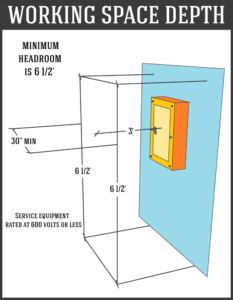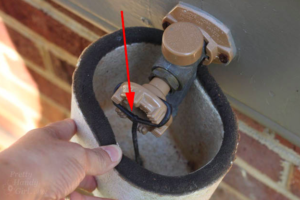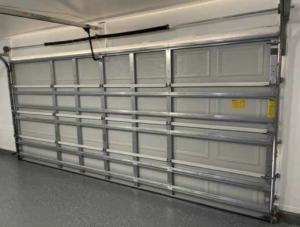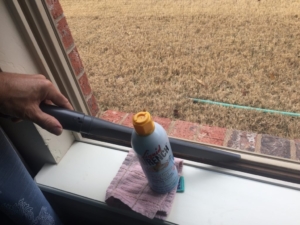
Bed Bugs and Their Prevention
Bed bugs are small, flightless, rust-colored parasites that feed on the blood of humans and other warm-blooded animals. Homeowners should learn the telltale signs of these pests.
Adult bed bugs are flat and the shape of apples, with rust-colored, oval bodies. Newly hatched bed bugs are semi-transparent, light tan in color, and the size of a poppy seed. Yet, due to their elusive nature, their presence is usually discovered through peripheral clues rather than by seeing the bugs themselves. Some of these signs include fecal spots, blood smears, crushed bugs, or the itchy bumps that may result from bites. The bugs may be disturbed while feeding and leave a cluster of bumps, or they may bite in a row, marking the path of a blood vessel. The parasites emit a characteristic musty odor, although the smell is sometimes not present in even severe infestations. The bugs also emit a scent that is picked up by dogs, which has lead to the implementation of dogs for bed bug detection. Properly trained dogs can find bed bugs in wall voids, furniture gaps, and other places that homeowners may overlook. This helps exterminators to know where they should focus their efforts.
History and Resurgence
Bed bugs were all but eradicated in the 1950s, but they have re-emerged in a big way. At the Environmental Protection Agency’s National Bed Bug Summit in 2009, researchers decided that the parasite’s revival is more appropriately termed a pandemic rather than an epidemic, noting its rapid spread across large regions and different continents. The United States has seen a 50-fold increase in bed bug infestations over the last five years, according to the National Pest Management Association. The outbreak has affected most parts of North America and Europe, especially in urban areas.
Researchers believe that bed bugs have roused from a half-century of hibernation for two reasons: the termination of the use of the pesticide DDT; and a rise in international travel. DDT, a powerful synthetic pesticide, was widely used in agriculture until a public outcry concerning its safety lead to a U.S.-ban of the chemical in 1972, followed by international bans. Unbeknownst to the environmentalists of the time, these laws would permit future outbreaks to grow unchecked, which is precisely what happened when travel increased from countries where bed bugs were never subjugated, such as India.
Urban hubs of international travel, such as New York City, have been hit hardest by the resurgence. The bugs hitch rides from country to country in suitcases and creep into hotel rooms, where other guests are then exposed and unknowingly spread the parasites to movie theatres, cabs, buses, hospitals, their homes, and everywhere in between. In New York City, bed bug reports increased 800% from 2008 to 2009, a year in which the Department of Housing Preservation and Development received 13,152 complaints of bed bug infestations.
Treatment and Prevention
Because bed bugs are adept at hiding almost anywhere, an alarming quantity of possessions, from curtains to books and picture frames, must be discarded or quarantined. Some possessions may be salvaged if they are sealed in special casing long enough for the bed bugs to die, which can take many months. During this time, residents may be forced to move out of the home and into temporary housing.
Fortunately, the health dangers posed by bed bugs appear to be limited to temporary skin irritation and inflammation, akin to mosquito bites. There are no known cases of disease transmission from bed bugs to humans. However, a small percentage of the population may experience anaphylactic shock. Measures should be taken to prevent bacterial infection of bites from bed bugs by washing the area with soap and water and applying an antiseptic.
It’s best for bed bugs to be treated by pest management professionals (PMPs) and not homeowners, as there is risk that an inexperienced person may make the infestation worse. For instance, bug bombs are ineffective and may actually spread the infestation. Even chemical sprays designed to kill bed bugs can have the opposite effect, if used improperly. PMPs can inspect for bed bugs in their immature stages of development, including their eggs, while homeowners are not trained to do this. In addition, should the homeowner attempt to clean up an infestation before calling in a professional, this may make it difficult for the PMP to assess the true extent of the infestation.
The following tactics may be useful for confirmation of and temporary relief from the presence of bed bugs:
Remove bed skirts, as they provide easy access for the bugs to travel from the floor to your bed. If you must have bed skirts, make sure they do not reach the floor.
Move your bed away from the wall. Bed bugs cannot fly, but they can climb walls in order to fall onto the bed.
Place furniture legs in tin cans coated with talcum powder, petroleum jelly or a non-evaporative liquid to deter the bugs from climbing.
Place a strip of duct tape at the base of furniture with the sticky side out. This tactic can be used to confirm the presence of bed bugs because it will trap them in place.
Spray cracks and crevices with an insecticide designed to control bed bugs. Follow the label’s directions carefully. However, do not treat bedding, towels or clothing with insecticide.
Homeowners can limit their chances of exposure by purchasing only new furniture, as stowaway bed bugs can hide in older or used chairs and mattresses. Hostels, hotels and motels host many travelers and are breeding grounds for bed bugs, and many hostels ban sleeping bags for this reason. Unfortunately, person-to-person contact is difficult to avoid.
Bed bugs are a growing, serious threat. Homeowners who suspect that they or their home has been exposed to bed bugs may benefit by learning to recognize and become familiar with these pests because of their potential to infest the home and damage property
Home Run Inspections, LLC
Oklahoma: 405-905-9175
Florida: 850-203-3239
Info@HomeRunInspections.com
We Cover All the Bases!
Serving the Oklahoma City metro and surrounding areas including Edmond, Yukon, Piedmont, Bethany, El Reno, Tuttle, Mustang, Moore, Norman, Midwest City, Del City, Choctaw, McCloud, Shawnee, Harrah, Newalla, Jones, and more.
Also Now Serving the Florida Panhandle metro areas including Destin, Fort Walton Beach, Okaloosa Island, Miramar Beach, Santa Rosa Beach, Niceville, Shalimar, Freeport, Crestview, DeFuniak Springs, Panama City Beach, and more.
Schedule Your Inspections Online at:
Oklahoma Scheduler
Florida Scheduler
Like us on FaceBook
Follow us on Twitter
Follow us on Instagram














